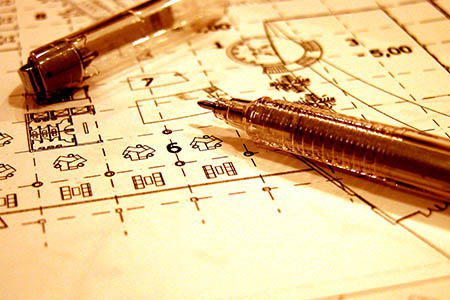STEM Center
STEM (or STEAM) education is an interdisciplinary approach to learning that integrates the listed disciplines in a cohesive manner to solve real-world problems and foster critical thinking, creativity, and innovation. STEM education aims to prepare students for the increasingly technology-driven and complex world by providing them with the necessary skills to thrive in various fields.
Key components of STEM or STEAM education

Science: Science education focuses on understanding the natural world through observation, experimentation, and analysis. It includes subjects such as biology, chemistry, physics, and environmental science.

Technology: Technology education involves the study of tools, machines, systems, and processes that are designed to solve problems and improve human life. It encompasses areas like computer science, information technology, robotics, and digital literacy.

Engineering: Engineering education emphasizes the application of scientific principles to design and create solutions to practical problems. It involves the process of designing, building, and testing various structures, machines, and systems.

Art: This is the A in the STEAM acronym, which expanded the original STEM to include Art. Leonardo da Vinci is just one of many examples of how Art and Science complement each other.

Mathematics: Mathematics education provides the fundamental skills and concepts necessary for understanding and solving problems in science, technology, and engineering. It includes topics such as algebra, geometry, calculus, and statistics.
Ways to Incorporate STEM Education

Hands-on Experiments: Conducting science experiments at home allows students to explore scientific concepts firsthand and develop critical thinking skills. Families can use simple household materials to perform experiments and observe phenomena.
- View the Hands-On Learning Center, the Fun & Hands-On Science portion of the Focus on Science Learning Center, or the Courses Containing Labs and Experiments portion of the Focus on Science Learning Center.
Educational Games and Apps: There are numerous educational games and applications available online that cover various STEM topics. These resources can make learning engaging and interactive for students while reinforcing key concepts.
- Visit the math and science games available on World Book Online, available in both the Kids and Student Libraries.
Project-Based Learning: Encourage students to work on projects that involve designing and building prototypes, solving engineering challenges, or conducting scientific investigations. Project-based learning fosters creativity, problem-solving, and collaboration skills.
- All of the Hands-On and Lab courses listed in the Focus on Science Center would qualify as Project-Based Learning. Also see some of the Computer, Art, and Design based courses in the Career Center, such as Editing Photos with GIMP, Introduction to Graphic Design, or Internet Entrepreneurship for Teens.
Field Trips and Outdoor Activities: Visiting science museums, nature reserves, or participating in outdoor activities such as hiking and gardening provide opportunities for hands-on learning and exploration of STEM concepts in real-world contexts.
- Try the virtual and/or outdoor activities included in Foods and Food Production or Nature/Outdoors.
- For more information, read these articles from The Old Schoolhouse Magazine®: Living History Museums—Your Secret Community Resource or Using Museums in Your Studies.
Integration of Subjects: Highlight STEM concepts as they appear in other subjects such as literature, history, and art to demonstrate their interdisciplinary nature and relevance to everyday life. In addition, the other school subjects (such as writing or public speaking) enhance a student’s ability to communicate during their STEM-related studies.
The integration of subjects is what makes homeschooling such a great option for STEM education. It’s not about how many specialized STEM courses you include, but rather how to incorporate a STEM awareness into the learning plan you tailor for your student.
- Visit the wide variety of Unit Studies we have available in multiple subjects. Also of interest are courses such as Ditch the Desk for younger students and Everyday Astronomy for the whole family.
Reasons a Homeschooling Family Should Care About STEM

Science – For classical scientists (the era of Copernicus, Newton, and Pascal), the pursuit of knowledge was inseparable from a reverence for the Creator’s design in nature. Their scientific endeavors were not mere intellectual pursuits but acts of homage to the Creator whose wisdom they sought to understand.
Technology – The modern world is increasingly dependent on technology. STEM education provides students with the necessary skills to thrive in various fields.
Engineering – There are numerous types of engineering disciplines, each specializing in different areas of technology, design, and construction. Medicine in a pharmacy was manufactured by a chemical engineer. Civil engineers design buildings, roads, bridges, and dams. Your home’s heating and cooling system was designed by a mechanical engineer. The work of engineers is foundational to our modern standard of living.
Arts – Is there any greater pursuit of the Creator than to join Him in creating? Simply observe the masterpieces of Michelangelo in the Sistine Chapel for a quick answer to that.
Mathematics – Math is the language of science, and its study is foundational to all the rest. It also offers numerous career opportunities across various industries, including finance, insurance, cryptography, and more. Mathematics, too, points to the Creator in unique ways.
- Infinite numbers point to an even more infinite God.
- Math relies on natural laws, giving a concrete example of “the Law of Nature and Nature’s God.”
- The study of probability, for example, shows just how improbable it is that the universe could come together by chance.
STEM – Whether your family is nurturing budding scientists or engineers, or simply fostering a lifelong love for learning, a study of STEM subjects can enrich their academic pursuits. It also cultivates the critical thinking, innovation, and curiosity essential for success in the ever-changing landscape of the 21st century.
Want to read more? Check out this newsletter from The Homeschool Minute: STEM, STEAM, and Science Fairs: Why Bother?


